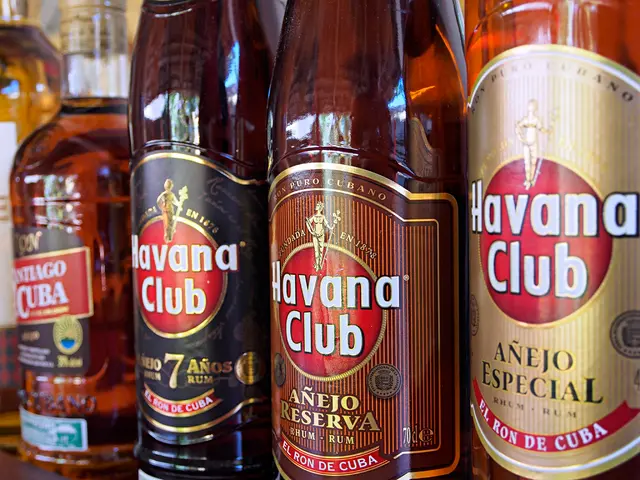Burning Calories in the Fast: Does Running Without Breakfast Give Extra Advantages?
Taking a Deep Dive into Fasted Cardio: Gain, Lose, or Just Maintain?
Step into the world of fasted cardio and explore the pros, cons, and everything in between to determine if this workout trend deserves your time!
If you've been scrolling through your #fitspo feed or catching up on the latest health and fitness news, it may seem like working out on an empty stomach is all the rage. But does it really make a difference in your weight loss journey? Is it a game-changer or simply a passing fad?
Fasten your seatbelts and get ready to dive into the intricacies of fasted cardio, along with its benefits, drawbacks, safety tips, and alternatives!
Fasted Cardio 101: The Lowdown on Fuel
Ever wondered how long it takes for your body to digest food? The answer varies based on what you've eaten, but fasted cardio refers to performing cardiovascular exercises when the stomach is empty. This could mean popping out of bed for a morning jog or venturing into the world of intermittent fasting.
Fasted cardio proponents claim it's a great way to supercharge fat loss. But before you jump on the bandwagon, let's take a closer look at the hard facts.
Burning Fat? More like Burning Questions.
The argument behind fasted cardio goes something like this: By forgoing food before a workout, the body's glucose reserves (the primary energy source) decrease. This depletion encourages the body to rely on stored fat as fuel instead, resulting in increased fat burning.
But does this make a real difference in the grand scheme of weight loss? The research is far from clear-cut, with varying results and an overall confusing landscape.
Harnessing the Power of Science: What the Research Says
In 2018, a review of multiple studies found that fasted exercise did indeed lead to a metabolic boost after the workout was over. However, another review from 2016 claimed that cardio performed in a fasted state resulted in greater fat burn compared to cardio performed in a fed state.
The takeaway? If you're all about shedding some pounds, you may want to give fasted cardio a shot. But if you're hell-bent on setting new personal records and breaking boundaries, fueling up before a workout might be a better option. Find what works for your body and stick with it!
The Downsides of Fasted Cardio: Folklore or Fact?
While fasted cardio may offer a temporary fat-burning boost, some research suggests that it doesn't have a significant impact on overall weight loss. In a 2014 study, two groups of 20 female participants were conducted: one performed an hour of fasted cardio, while the other engaged in an hour of non-fasted cardio. Both groups followed a diet regimen and worked out three times a week for four weeks.
The results? Both groups experienced significant weight loss, but there was no discernible difference between the two in terms of weight loss or body size changes. The 2016 review, however, focuses on confirming the connection between fasted cardio and fat burning, leaving out studies that contradicted its findings.
Remember, the relationship between fasted cardio and weight loss is complex, and we need more comprehensive and larger studies to fully understand the potential connection.
A Cat with Nine Lives: The Elusive Link Between Fasted Cardio and Muscle Building
Fasted cardio might lead to a slight edge in fat burning, but it could potentially hinder muscle building in the process. When the body lacks carbohydrates to use for energy, it triggers a process called gluconeogenesis, which transforms other compounds (such as proteins) into fuel. But protein is essential for muscle growth, which could lead to conflicting interests and negatively impact your #gains.
As for improved performance, studies have found that fasted cardio can lead to reduced efficiency, particularly for higher-intensity workouts. If your energy stores are depleted, you can't expect to get the maximum benefits from your workout.
Safety First: Navigating the World of Fasted Cardio
Fasted cardio is generally safe for most people to try for light or moderate workouts, but it's essential to exercise caution when planning an ambitious workout session.
Long, high-intensity workouts could potentially lead to low blood sugar and dehydration, causing dizziness, lightheadedness, or even fainting. To stay safe, it's recommended:
- Hydrate, hydrate, hydrate: Drink up! Knocking back some water before and after your fasted cardio session is crucial for helping your body regulate its temperature, lubricate its joints, and maintain the energy it needs to push through the workout.
- Take it slow: Begin with 10 minutes of moderate exercise (walking, jogging, or cycling slowly) and pay attention to how your body responds. Gradually work your way up to maximum durations as needed.
- Fuel up when you're done: Afterward, it's time to break the fast! Refuel your body with a balanced meal or a protein- and carb-rich snack.
Fasted cardio is not recommended for those with medical conditions affecting blood sugar, high blood pressure, pregnant individuals, or those new to cardio or workouts in general.
Fast-Food Fitness: Alternatives to Fasted Cardio for a Successful Weight Loss Journey
When it comes to weight loss, cardio can be a beneficial companion on your fitness journey. Here are some alternatives to fasted cardio to help you maintain a moderate weight effectively:
- HIIT yourself: A 2018 research analysis suggests that high-intensity interval training (HIIT) is a wonderful way to torch belly fat. Keep an eye on future studies to learn more, but the current findings are promising.
- Go hard or go home: Although walking, biking, and hiking are fantastic workouts, running might have a slight edge when it comes to burning calories.
- Sweat it out: Combining cardio with strength training is an excellent way to boost your resting metabolic rate, leading to increased calorie and fat burn in the long run. So if you're looking for maximum results, give your workout a one-two punch with a combo of cardio and strength training!
In summary, while fasted cardio has its theoretical benefits in terms of fat oxidation, the evidence for significant fat loss advantages is still incomplete. It carries risks, particularly in relation to muscle mass maintenance, making individual goals and nutritional strategies essential considerations when incorporating fasted exercise into a fitness routine.
If you're unsure whether fasted cardio is right for you, consult a fitness professional or your healthcare provider for personalized advice.
- Fasted cardio, performed when the stomach is empty, can be a morning jog or part of intermittent fasting, often claimed by proponents to boost fat loss, but its real impact on weight loss isn't decisive in research studies.
- Conducting fasted cardio could expedite the rate at which your body burns fat post-workout, but it might not have a substantial effect on overall weight loss, as some studies suggest.
- As you delve deeper into the world of fasted cardio, it's important to be aware that it may hinder muscle building due to the process of gluconeogenesis, which converts other compounds like proteins into fuel, essential for muscle growth.
- Incorporating fasted cardio into your workout regimen could potentially lead to reduced efficiency, particularly for intense workouts, affecting the quality of your exercise outcomes.
- Regardless of your choice, remember to prioritize safety measures like staying hydrated, starting with shorter workouts and gradually increasing the duration, and refueling your body with a balanced meal afterward.
- For a successful weight loss journey, consider alternating fasted cardio with other exercise options, such as high-intensity interval training (HIIT), running, or combining cardio with strength training to create a well-rounded fitness plan.








